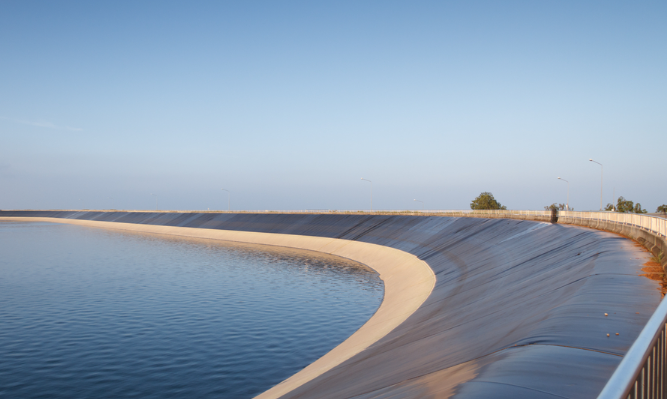- Understanding the Role of Geomembrane Liners in Waste Management
- Innovations in Geomembrane Liners for Water Management
- Geomembrane Liners: A Comprehensive Guide
- The Future of Geomembrane Liners in Civil Engineering
- Geomembrane Liners: Enhancing Landfill Stability
Manager:Alvin Wang
WhatsApp:+62 8983806051
Tel:+86 10-5797-1075
Email:steelwang@okorder.com
Address:3rd Floor, No.2 Building, No.1 Sanlihe Road
Basic methods for rational cutting of composite geomembranes
When cutting the composite geomembrane, sufficient margin, usually about 1.5%, must be left to allow for splicing and adaptation to shrinkage and expansion caused by temperature changes. During the construction process, in order to prevent wind blowing, a 20 to 40 kg sand bag should be placed every 2 to 5 meters at the film corner for fixation.

However, after the composite geomembrane has been used for a period of time, due to the erosion of fish and shrimp feces, leftover bait and other debris in the pond, cracks in the casting material may appear to varying degrees, resulting in a drop in the water level. The emergence of this situation requires us to pay more attention to detail management during material selection and construction to ensure the durability and effectiveness of the composite geomembrane.
It is worth noting that the use of composite geomembranes can significantly speed up the breeding cycle of fish ponds while saving costs and time, thereby increasing production in disguised form, which is of great significance for improving economic benefits.
At the construction site, the quality of the material can be quickly identified through a combustion test: if black smoke quickly emits or melt drips rapidly during the burning process, it is not a high-quality material. It is strictly prohibited to use it if it does not meet the requirements. The environment must be checked before construction to ensure that the air humidity and ambient temperature meet the construction requirements.
When the base is a highly permeable layer containing coarse particles and the depth of the permeable layer is generally within 12 meters, and the overlying clay layer is thin, or when the trench depth can reach 16 meters through hard work, special attention needs to be paid to the cutting and laying of the materials. Therefore, space for thermal expansion and contraction deformation of materials should be reserved at the construction site. The anti-seepage membrane must be installed on the same day, try to avoid wrinkles and dragging, and should not be pulled too tight.
Concrete embedded parts play an important role in the anti-seepage membrane and anti-seepage process, and their connection quality directly affects the overall performance of the anti-seepage membrane. Especially in domestic waste landfills, tailings ponds and other places, the quality and construction technology requirements of anti-seepage membranes are more stringent. Faced with this complex situation, a composite geomembrane with high strength and outstanding tensile fracture performance is undoubtedly the best solution.

Through the above methods and precautions, we ensure that the composite geomembrane is efficient and long-lasting in practical applications and maximizes its anti-seepage effect.
-
2024-06-13Geomembrane is not plastic cloth






